Join the HUMANITA Summer School 2025!
We warmly invite you to apply for our HUMANITA Summer School, taking place from July 14th to 17th, 2025 at Carinthia University of Applied Sciences in…
Empower and enable personalities, institutions and societies to face present and future challenges in the management of conservation areas (MCA).
The UNESCO Chair for the Sustainable Management of Conservation Areas (MCA) shall provide excellent research and inspiring learning experiences for nature conservation in the 21st century. In particular, the Chair shall contribute to empower and enable personalities, institutions and societies to face the future challenges in the management of conservation areas. The Chair has been established in spring 2020. It shall become an internationally visible hub for excellence, innovation and new technologies in nature conservation. Activities of the Chair are based on an interdisciplinary, holistic and integrated understanding of conservation areas, as advocated and exemplified by UNESCO Biosphere Reserves, (natural) UNESCO World Heritage sites and UNESCO Geoparks.
The UNESCO Chair is rooted at the Carinthia University of Applied Sciences (CUAS) where it is established at the CUAS Academy, an interdisciplinary institution for lifelong learning. The chair is held by FH Professor Michael Jungmeier. As an ecologist and human geographer, he has more than 30 years of international professional experience in nature conservation, especially in the planning and management of protected areas.
UNESCO, the United Nations Educational, Scientific and Cultural Organization, has launched the UNESCO Chairs programme in 1992. Through this network, higher education and research institutions all over the globe pool their resources, both human and material, to address pressing challenges and contribute to the development of their societies. Thus, Carinthia University of Applied Sciences is an active member of the global UNITWIN/UNESCO Chairs Program. This currently comprises a network of 850 institutions in 117 countries. We are proud of these partnerships and our intensive cooperation with the various UNESCO Biosphere Parks, UNESCO World Heritage Sites and UNESCO Global Geoparks. Find more information here: https://www.unesco.org/en/unitwin
“To our students we offer unique learning experiences on nature conservation and sustainable development. We want to inspire students and teachers as well by exiting learning formats, innovative settings and a professional learning environment. We learn indoor, outdoor and in virtual space.” All educational offers are conducted in cooperation with partners from different sectors and with an interdisciplinary bunch of teachers and trainers.
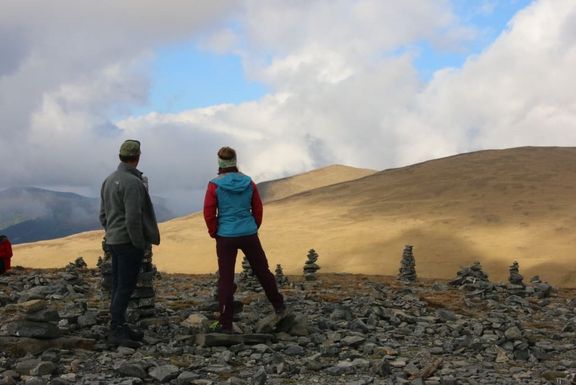
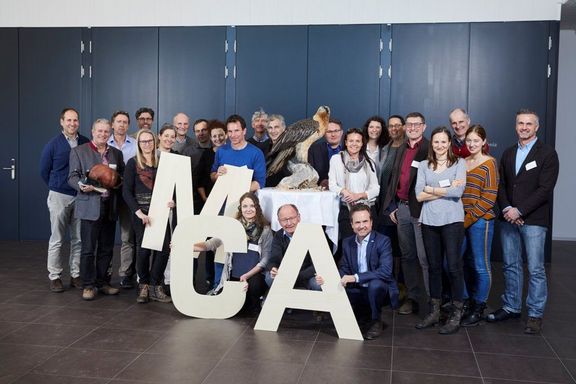
All, one needs to know about conservation areas, their preparation, planning and management – is provided in this comprehensive master programme. The unique educational offer shall enable participants to:
The course of study is based on profound theoretical bases, international standards and principles on one hand and on practical tools, lively experiences and best practice on the other. Particular emphasis is put on innovative technologies, trans-transcultural learning, the mechanisms of development cooperation and the personal competence to conduct inter- and transdisciplinary dialogues.
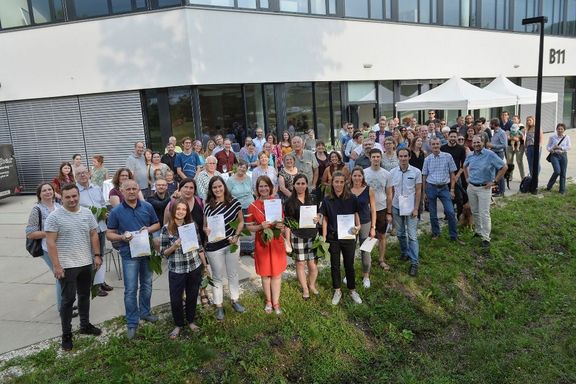
Learn, exchange, enjoy. This is the mission statement of a summer university that takes place annually one week in July in the Lakeside Campus in Klagenfurt. It is an advanced training for decision makers and persons responsible for conservation areas.
The academy is comprised of an introductory conference, three intensive seminar days and a two-day field trip. The seminars’ focus changes each year, the workshops are conducted by international experts. This format provides the opportunity for extensive sharing of experiences and discussions at a high level. Participants bring their own showcase or problem. In an intensive 3-days seminar innovative solutions are developed in discussion with peers and internationally renowned experts.
EPA offers outstanding intercultural learning opportunities for executives of conservation areas.
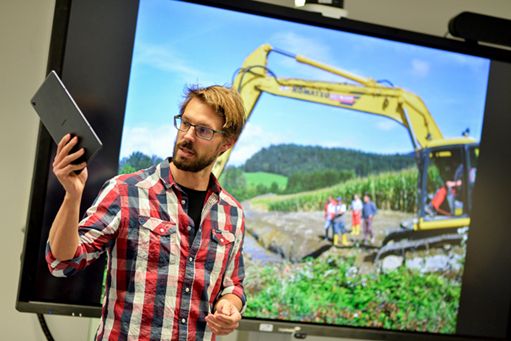
How are nature conservation measures at extraction sites to be implemented? How can be provided optimal nesting and breeding facilities for different species? How are neobiota (invasive species) or communal green areas to be managed? How are conservation devices such as bat detectors, camera traps and drones operated? The newly developed job profile of a ‘Nature Conservation Engineer’ embodies the competence for all hands-on conservation issues that occur on construction sites, infrastructures and in settlement areas.
Participants are, amongst others, employees of construction companies, of the energy, raw materials and transport industry, from planning departments, nature conservation organisations as well as from the public administration.
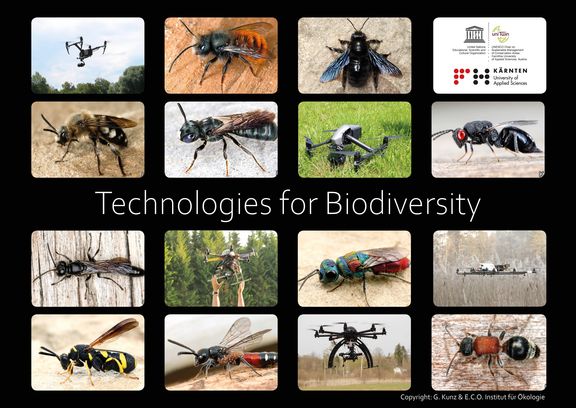
This educational offer aims to identify species using IT and AI-based methods. Specifically, these are identification apps (e.g. iNaturalist, Pl@ntNet, BirdNET, etc.), camera traps, optical and acoustic sensors (e.g. bat detectors, radars, etc.). The graduates will able to:
There is a demand for qualified biodiversity experts in the field of applied nature conservation (protected areas, municipalities, specialist and planning offices, nature conservation organisations and institutions), educational and research institutions (especially schools, museums and universities) as well as in the field of nature education (environmental educators, nature and hiking guides, etc.).
Details
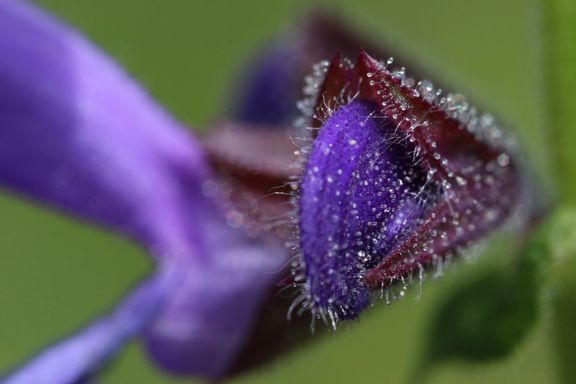
Aktuell entwickeln wir weitere Ausbildungsformate. Bleiben wir in Kontakt.
Are you ready to pave the way for a greener future? At Green Transition Engineering, we believe that achieving the goals of the green transformation requires efficient and well-informed decision-making. That‘s why we emphasize the power of data in our approach. Data holds the key to understanding the current state of affairs and identifying effective sustainability measures.
With expertise in data engineering and understanding of global connections across ecological, economic, and social realms, our graduates are uniquely positioned to shape the future of sustainable development.
The bachelor degree program "Green Transition Engineering" provides a broad and application-oriented basic education in the various transition disciplines (society, economy, ecology), the basic competences in the natural sciences and their technical possibilities, digitalisation and data engineering with relevant sensor, environmental and climate data, as well as fields of application. Accordingly, the curriculum is divided into nine focus areas in which specific competences are acquired and the Bachelor Thesis for completing the studies.

We warmly invite you to apply for our HUMANITA Summer School, taking place from July 14th to 17th, 2025 at Carinthia University of Applied Sciences in…

Last week the UNESCO Chair hosted a 2-day Kick-Off event for the Interreg Slovenia-Austria project “ZDrauA – Next generation biomonitoring of the…

In our concluding workshop of the expedition.nationalpark, we explored three future scenarios for alpine mountain huts in the Hohe Tauern National…
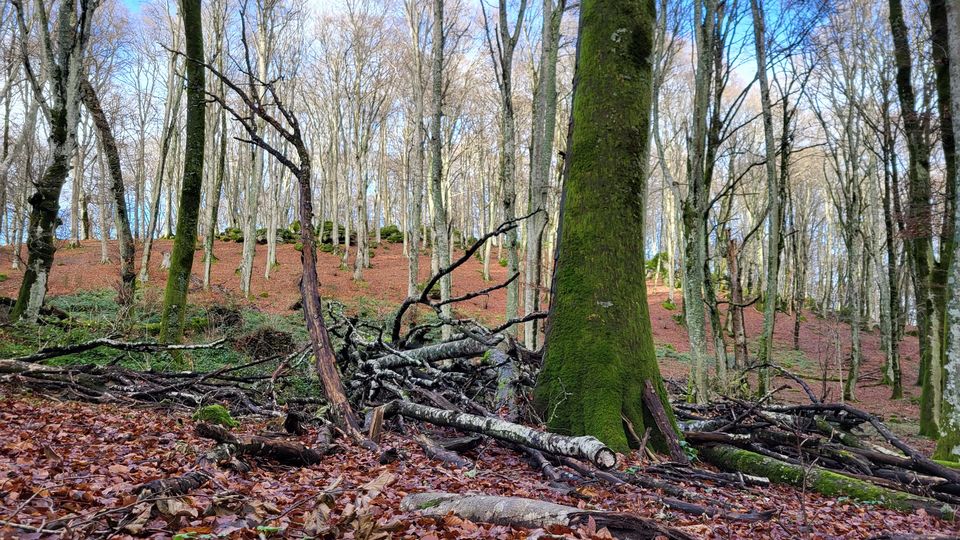
Join the BEST NATURE Programme
Are you a student at CUAS and passionate about nature protection and restoration? We have an incredible opportunity…
Conservation areas have turned more and more into model regions for both the conservation of biodiversity and equitable sustainable development. UNESCO sites such as biosphere reserves, world heritage sites and geoparks are based and directly interrelated to UNESCO´s goals and values. Hence, these sites have become learning sites for translating international policies and standards into real life contexts. This raises important and exciting research questions that shall be addressed by the UNESCO Chair for Sustainable Management of Conservation Areas.
Particular emphasis shall be given to trans-disciplinary and trans-cultural research designs, new methods and new technologies and fair formats of citizen science. Research activities of the Chair shall contribute to strengthening conservation areas locally, nationally, regionally and globally as well. UNESCO sites and UNESCO programmes shall directly benefit from enhanced capacities, research findings and experiences as generated in the Chair´s work.


BiDiTEch Lab is a groundbreaking project funded by the Austrian Research Promotion Agency (FFG), which provides an opportunity to acquire research…

The Interreg Slovenia-Austria project Zdraua: Next-generation biomonitoring of Drava/Drau for sustainable and healthy regional development comprises…

In this research project, an interdisciplinary team of sociologists, ecologists, human geographers and legal scholars is nvestigating the…
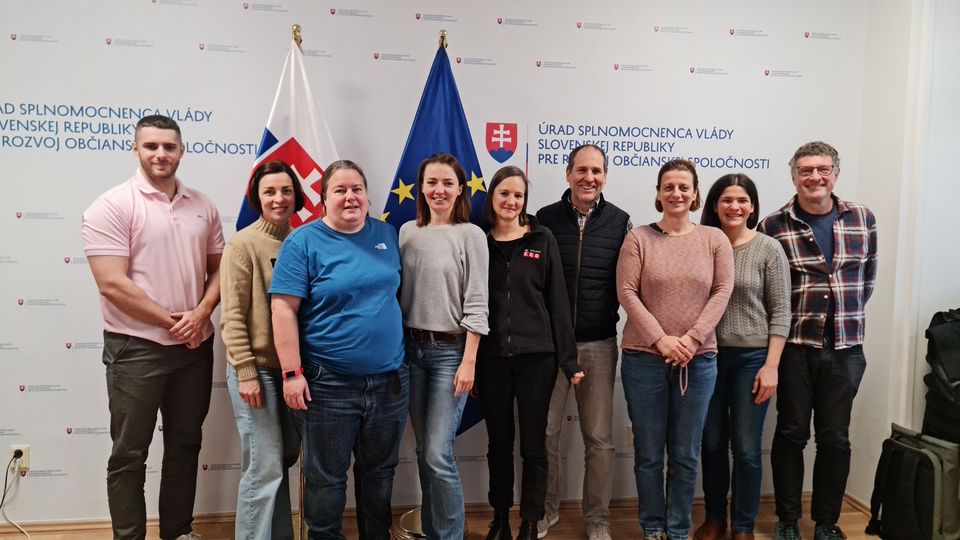
The Trilateral Permanent Secretariat for the UNESCO World Heritage Site "Ancient and Primeval Beech Forests of the Carpathians and Other Regions of…
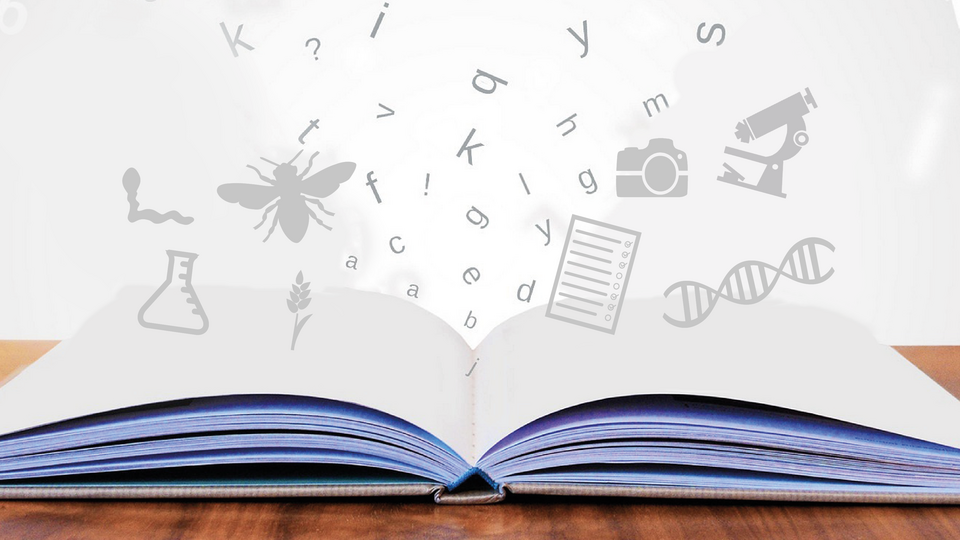
Cooperation with Natural Science Association for Carinthia
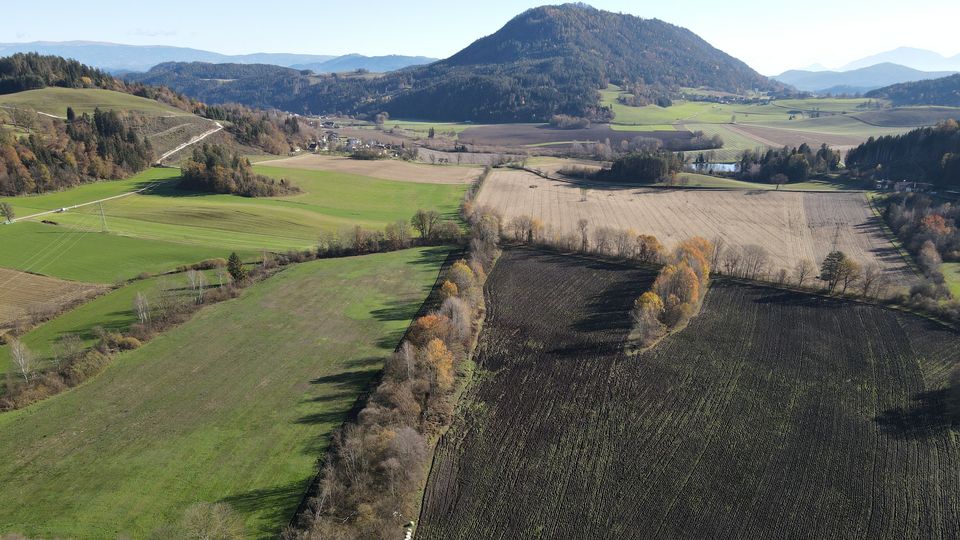
Cooperation with the "Stiftung der Kärntner Sparkasse" (Foundation of the Bank of Carinthia)
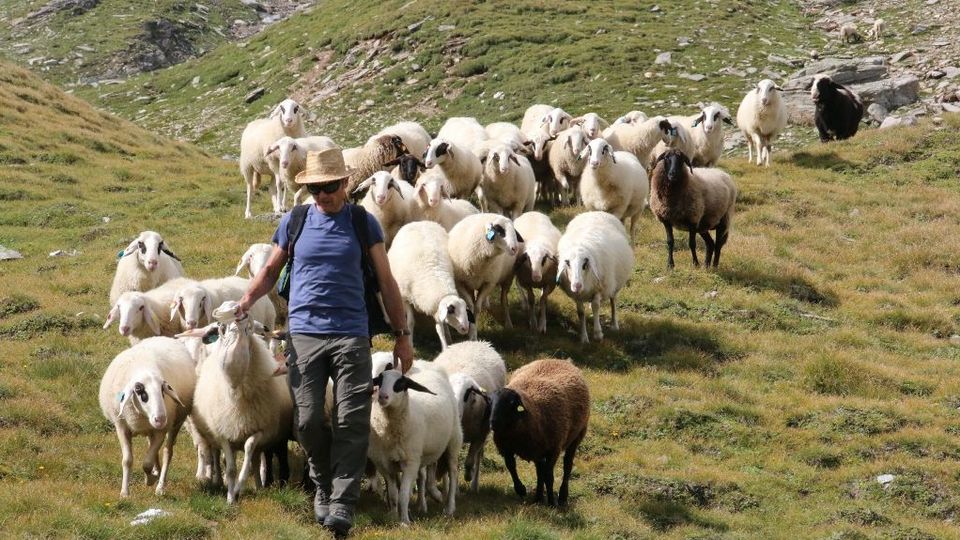
Cooperation with Hohe Tauern National Park Carinthia
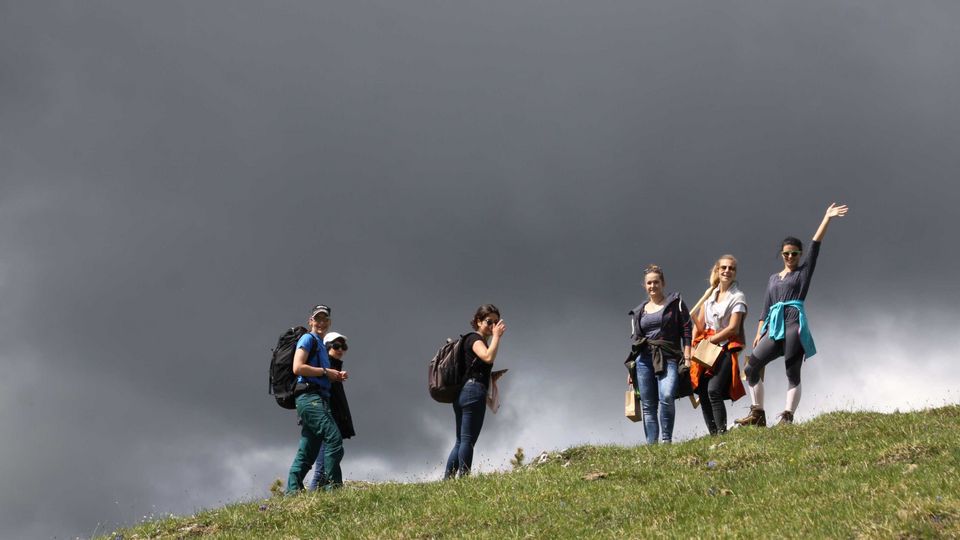
Cooperation with Biosphere reserve Nockberge (Salzburger Lungau & Kärntner Nockberge UNESCO Biosphere Reserve) and Klagenfurt University
Michael Jungmeier is chairholder. Throughout his career, the ecologist and human geographer has been focusing on biodiversity research, concepts and tools in nature conservation, on human-nature-relationship and environmental history. He worked extensively with inter- and transdisciplinary research designs and methods and has a long track of academic lectureships at different universities. Jungmeier has worked in planning and consulting of conservation areas, as well as in research and education, capacity building and training for more than 30 years.
FH-Prof. Mag. Dr. Michael Jungmeier
Professor for Nature Conservation and Sustainability
FH Kärnten – Campus Villach
Europastraße 4, 9524 Villach
Monika Auinger is senior researcher at the UNESCO Chair. She is a human geographer with a focus on regional development in rural areas and has specific qualifications in transdisciplinary projects. Monika is responsible for developing and conducting research projects together with partners and stakeholders.
Monika Auinger, MSc.
Senior Researcher for Nature Conservation and Sustainability
FH Kärnten – Campus Villach
Europastraße 4, 9524 Villach
Sofia Bergmann supports the team in the field of office organisation. She is responsible for administrative and organisational tasks of the UNESCO Chair team.
Sofia Bergmann
Office Support - UNESCO Chair on Sustainable Management of Conservation Areas
FH Kärnten – Campus Villach
Europastraße 4, 9524 Villach
Alexandra Liegl is the Head of the CUAS Academy. She is responsible for the overall coordination of all educational offers and the management of the CUAS Academy.
Mag.a Alexandra Liegl
Head of CUAS Academy
FH Kärnten – Campus Villach
Europastraße 4, 9524 Villach
+43 5 90500 4311
a.liegl[at]fh-kaernten[dot]at
Melina Hierländer works as course administrator at the CUAS Academy. She is responsible for the administration of the master programme “Management of Conservation Areas” that includes a range of tasks such as correspondence, lesson planning and giving support to applicants and students.
Melina Hierländer
Administration
+43 5 90500 4305
m.hierlaender[at]fh-kaernten[dot]at
FH Kärnten – Campus Villach
Europastraße 4, 9524 Villach
Christina Moser works as course administrator at the CUAS Academy. She is responsible for the administration of the certificate course “Nature Conservation Engineer” that includes a range of tasks such as correspondence, lesson planning and giving support to applicants and students.
Christina Moser
Administration
+43 5 90500 4303
c.moser[at]fh-kaernten[dot]at
FH Kärnten – Campus Villach
Europastraße 4, 9524 Villach
Vanessa Berger is a senior researcher and project manager at the UNESCO Chair. She is an ecologist specialized in spatial and temporal analysis, mobile data collection, and vegetation ecology. Her primary research interest lies in integrating new technologies into biodiversity monitoring workflows. Besides the work in other projects, her focus is mainly on the implementation and management of the FFG - Coin (capacity building) project 'BioMONITec - Biodiversity Monitoring Technologies - Test, Development and Transfer of disruptive engineering technologies into conservation practice'.
Vanessa Berger, MSc
Senior Researcher on Sustainable Management of Conservation Areas
FH Kärnten – Campus Villach
Europastraße 4, 9524 Villach
+43 5 90500 2139
v.berger[at]fh-kaernten[dot]at
Daniel Dalton is a Senior Researcher at the UNESCO Chair. He has a background as a specialist in integrated pest management of fruit and berry crops, focusing on insects. Daniel works on the implementation of the COIN project, ‘biodiversity monitoring technologies’ (BioMONITec).
Daniel Dalton, PhD
Senior Researcher on Sustainable Management of Conservation Areas
FH Kärnten – Campus Villach
Europastraße 4, 9524 Villach
+43 5 90500 2141
d.dalton[at]fh-kaernten[dot]at
Julian Greiler is a project assistant at the UNESCO Chair. He is currently a student in the Landscape planning and Landscape architecture study program at BOKU- University of Natural Resources and Life Sciences, Vienna. Julian supports projects with visitor monitoring within protected areas, for example the INTERREG IT-AT project INDIALPS.
Julian Greiler
Project assistant on Sustainable Management of Conservation Areas
FH Kärnten – Campus Villach
Europastraße 4, 9524 Villach
+43 5 90500 2166
j.greiler[at]fh-kaernten[dot]at
Gerfried Pirker is a Nature Conservation Engineer with further training in forestry and agriculture, along with expertise in equipment and technology. His work focuses on equipment and technology and he supports the research team in various projects such as Golden Toad Award, INDIALPS or MEMO.
Gerfried Pirker
Nature Conservation Engineer
FH Kärnten – Campus Villach
Europastraße 4, 9524 Villach
Marta Polizzi is a biologist and natural scientist with a focus on bat ecology. Her main interests regard spatial and temporal analysis, climate change, conservation ecology, animal behavior and bioacoustics. She has been involved in local bottom-up movements for the protection and re-appropriation of natural areas in urban contexts, and has experience with citizen science projects and environmental education.
Marta Polizzi, MSc
Junior Researcher on Sustainable Management of Conservation Areas
FH Kärnten – Campus Villach
Europastraße 4, 9524 Villach
+43 5 90500 2257
m.polizzi[at]fh-kaernten[dot]at
Lilia Schmalzl is Senior Researcher and Project Manager at the UNESCO Chair. She is a geographer with a focus on sustainability, social acceptance of renewable energies, water management and tourism in Conservation Areas. Lilia currently works on project management and implementation of the INTERREG Central Europe project HUMANITA and the INTERREG IT-AT project INDIALPS.
Lilia Schmalzl, MSc
Senior Researcher on Sustainable Management of Conservation Areas
FH Kärnten – Campus Villach
Europastraße 4, 9524 Villach
+43 5 90500 4315
l.schmalzl[at]fh-kaernten[dot]at
Johanna Schulz is a Junior Researcher at the UNESCO Chair. She is a biologist with a focus on genetics, in particular the sampling, processing and analysis of environmental DNA.
Johanna works on the implementation of the COIN project ‘biodiversity monitoring technologies’ (BioMONITec).
Johanna Marion Schulz, MSc.
Junior Researcher on Sustainable Management of Conservation Areas
FH Kärnten – Campus Villach
Europastraße 4, 9524 Villach
+43 5 90500 2181
j.schulz[at]fh-kaernten[dot]at

Selina Straßer is a Junior Researcher at the UNESCO Chair. She is a pedagogue with a focus on adult education and vocational training. Selina works on the implementation of the Horizon 2020 project SHARED GREEN DEAL and is responsible for the cooperation project Science_Linknockberge.
Selina Straßer, BA MA
Junior Researcher on Sustainable Management of Conservation Areas
FH Kärnten – Campus Villach
Europastraße 4, 9524 Villach
+43 5 90500 2142
s.strasser[at]fh-kaernten[dot]at
Klaus Steinbauer is a Senior Researcher at the UNESCO Chair. He is a biologist with a focus on biodiversity research, long-term monitoring and mountain ecology. Klaus works on the implementation of the COIN project, ‘biodiversity monitoring technologies’ (BioMONITec).
Mag. Dr. Klaus Steinbauer
Senior Researcher on Sustainable Management of Conservation Areas
FH Kärnten – Campus Villach
Europastraße 4, 9524 Villach
+43 5 90500 2138
k.steinbauer[at]fh-kaernten[dot]at
Vid Švara is a Senior Researcher at the UNESCO Chair. He is a biologist with an expertise in biodiversity research, genetic identification methods, and effects of environmental change on biota. Vid is coordinating and working on the implementation of genetic identification methods in diverse projects at the Chair including a Horizon Europe project HelEx, a Biodiversa+ project DNAquaIMG, an ÖAW and FWF Disruptive Innovation project ProTecteDNA, an Interreg Central Europe project Humanita, and a FFG COIN project BioMONITec.
Dr. rer. nat. Vid Švara
Senior Researcher on Sustainable Management of Conservation Areas
FH Kärnten – Campus Villach
Europastraße 4, 9524 Villach
Ilja Svetnik is a Junior Researcher at the UNESCO Chair. He is a biologist and ecologist with a focus on biodiversity management and science communications. Ilja works both on specific actions to establish, improve and monitor habitats, as well as on genetic and morphological anaylsis.
Ilja Svetnik, MSc
Junior Researcher on Sustainable Management of Conservation Areas
FH Kärnten – Campus Villach
Europastraße 4, 9524 Villach
+43 5 90500 2148
i.svetnik[at]fh-kaernten[dot]at
Elisabeth Wiegele is a Junior Researcher at the UNESCO Chair . She is a geographer and trained nature conservation engineer. Her research and work focuses on nature conservation in civil engineering, management of invasive species and management of protected areas. She is responsible for the coordination of the nature conservation engineer course.
Elisabeth Wiegele, MSc.
Junior Researcher on Sustainable Management of Conservation Areas
FH Kärnten – Campus Villach
Europastraße 4, 9524 Villach
+43 5 90500 5140
e.wiegele[at]fh-kaernten[dot]at
Polona Zakrajšek is a Junior Researcher at the UNESCO Chair. She has a bachelor’s degree in Geography and a master’s degree in Forestry, Water and Landscape Management, with a focus on mountain (primary) forests, forest ecology, biodiversity monitoring, and nature conservation.
Polona works for the Permanent Secretariat of the World Heritage “Ancient and Primeval Beech Forests of the Carpathians and Other Regions of Europe”. The Secretariat is hosted at the Carinthia University of Applied Sciences.
Polona Zakrajšek, MSc.
Junior Researcher on Sustainable Management of Conservation Areas
FH Kärnten – Campus Villach
Europastraße 4, 9524 Villach
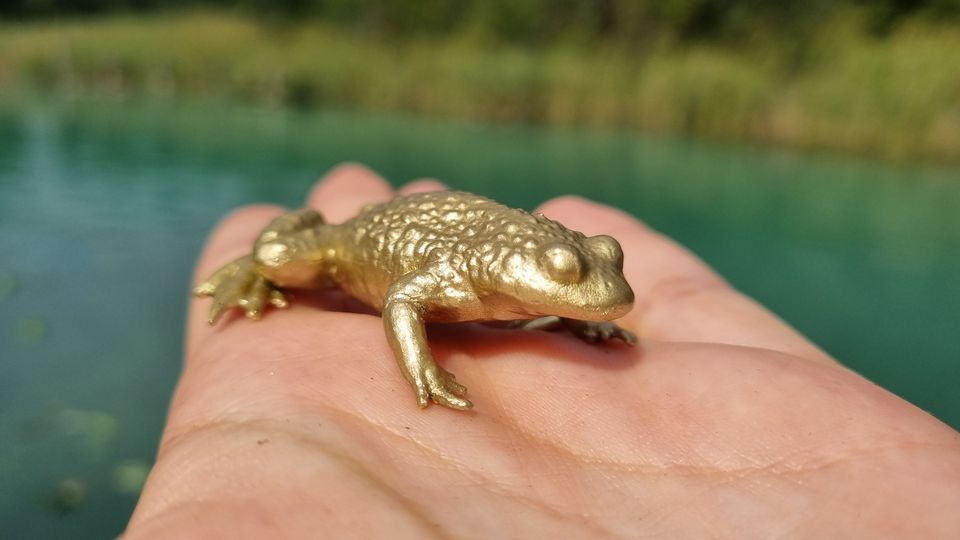
The Golden Toad Award is a prestigious competitive award that recognizes and promotes innovations in nature conservation in construction.
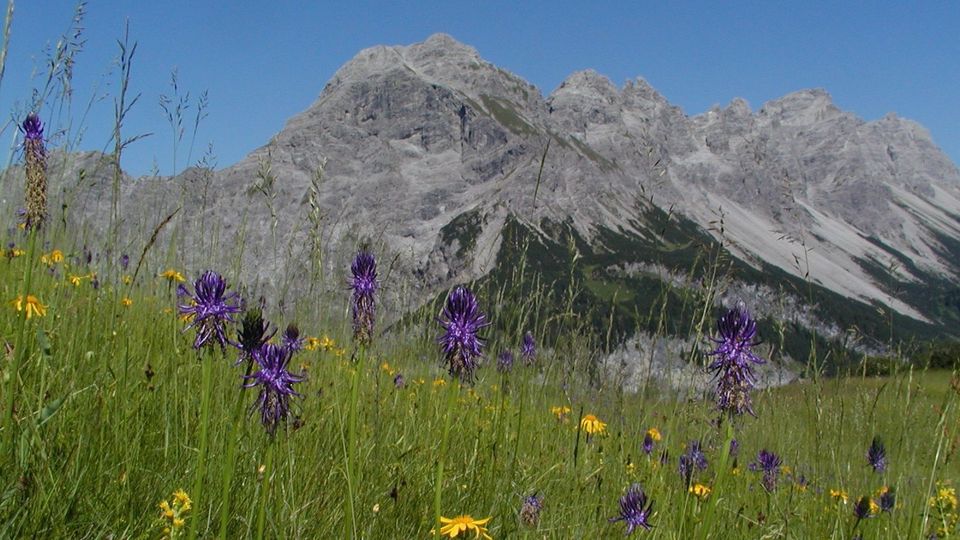
In Austria's federal system, the responsibility for nature conservation lies with the individual provinces (Bundesländer). It is essential to execute…
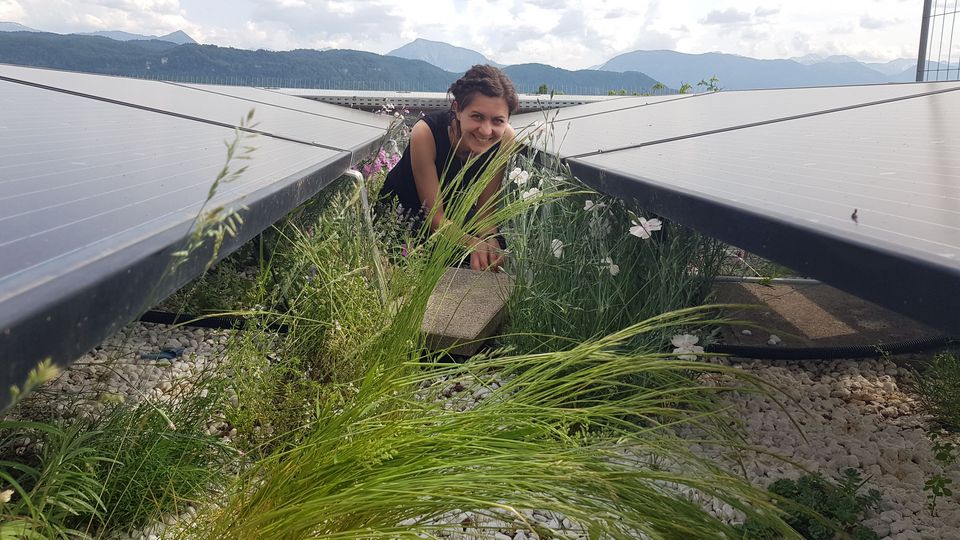
Together with partners HTL-Lastenstraße and GRÜNSTATTGRAU, the UNESCO CHAIR investigates the influence of vegetation on electricity production.
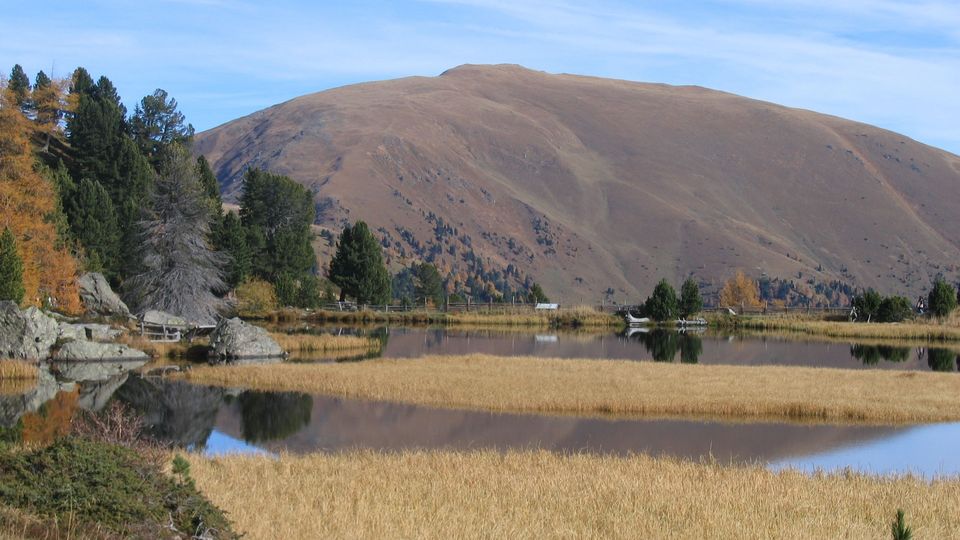
In this project, the Carinthia University of Applied Sciences is commissioned to produce a conference volume on the international EuroMAB conference…
Aigner S., Granig P., Jungmeier M., Zwander H., 2024: Carinthia Nature Tech: A new forum for integrating natural sciences and emerging technologies. In: Carinthia II, 214./134. Part 3 – Nature Tech, Klagenfurt, p. 4-6. Download
Ambrosi L., Berger V., Rainer G.,Obojes N., Tappeiner U., Tasser E., & Leitinger G., 2024. Spatiotemporal variability of evapotranspiration in Alpine grasslands and its biotic and abiotic drivers. Ecohydrology, e2633. doi: https://doi.org/10.1002/eco.2633
Auinger M., Jungmeier M., 2024: Schutzgebiete im Alpenbogen. In: Österreichischer Alpenverein (eds): Bergauf. 03/2024. 74-77. DOWNLOAD
Auinger M., Jungmeier M., Hilgarter K., 2024: expedition.nationalpark.2023 – Heiligenblut am Grossglockner: Rethinking tourism. The Future of Tourism in the Alpine-Adriatic Region. October 22nd - October 24 th 2024. Hermagor. DOWNLOAD
Auinger M., Jungmeier M., Hilgarter K., 2024: expedition.nationalpark.2023 – Heiligenblut am Großglockner: Tourismus neu denken. Villach. ISBN 978-3-99076-111-3. DOWNLOAD
Berger V., Dalton D. T., Steinbauer K., Insupp J. L., Schulz J. M., Švara V., Jungmeier M., 2024: Unlocking nature’s secrets – Digital Twins, eDNA and AI in nature conservation – a glimpse into the BioMONITec project. Forum Alpinum 2024, June 13th – 14th 2024, Kranjska Gora. ISBN 978-961-05-0899-1 (PDF), p. 53. DOWNLOAD
Dalton D., Berger V., Kirchmeir H., Adams V., Botha J., Halloy S., Švara V., Torres Ribeiro K., Chaudhary S., Jungmeier M., 2024: A framework for monitoring biodiversity in protected areas and other effective area-based conservation measures: Concepts, methods and technologies. IUCN WCPA Technical Report Series No. 7, Gland, Switzerland: IUCN. doi: https://doi.org/10.2305/HRAP7908. DOWNLOAD
Feldermann, K., Strasser, S., Salmhofer, M., 2024: Eco Social Work: Soziale Arbeit in Zeiten der Entfremdung. In: Sozialwirtschaft, 34, Heft 6. Nomos, p. 30-33. doi.org/10.5771/1613-0707-2024-6-30.
Gruber M., Fian L., Leuschner M., Nagele G., P. Anna, Pöcher J., Strasser S., 2024: Re(ad)dress – Einstieg in den Umstieg – Ein Programm zur Perspektivenbildung und Neuorientierung für ehemalige Sexarbeiter*innen in Kärnten. Kärntner Jahrbuch für Politik 2024, Hermagoras, 200-218. DOWNLOAD
Insupp J., Berger V., Greßmann G., 2024: Blending tradition with innovation: how acoustic sensors are revolutionizing rock ptarmigan monitoring. In: Carinthia II, 214./134. Part 3 – Nature Tech, Klagenfurt, 67-70. DOWNLOAD
Jungmeier M., 2024: Wellen und Muster der Europäischen Naturschutzpolitik in Kärnten – Das Beispiel Renaturierungsverordnung (RNV). Kärntner Jahrbuch für Politik 2024, Hermagoras, 231-241. DOWNLOAD
Jungmeier M., Berger V., Kirchmeir H., Strelnikova D., 2024: Conceptualizing the management of conservation areas: the launch of IPAM Toolbox 2.0. Forum Alpinum 2024, June 13th – 14th 2024, Kranjska Gora. ISBN 978-961-05-0899-1 (PDF), 55. DOWNLOAD
Jungmeier M., Berger V., Kirchmeir H., Strelnikova D., Wiegele E., 2024: Advancing technologies: IPAM Toolbox 2.0 for planning and management of Conservation Areas (MCA). In: Carinthia II, 214./134. Part 3 – Nature Tech, Klagenfurt, 49-61. DOWNLOAD
Komposch C., Glatz-Jorde S., Jungmeier M., Lamprecht J., 2024: Biodiversität im Biosphärenpark Kärntner Nockberge. Ergebnisse des 8. GEO-Tages der Natur 2023 – Auf der Suche nach zoologischen & botanischen Bären in der Bärengrube. Carinthia II, 214./134. Jahrgang, 61-132. DOWNLOAD
Sadoun M., Dalton D., Berger V., Paulus G., Anders K.-H., Svetnik I., Schultz J., and Unglaub P., 2024: High resolution environmental monitoring of pollinator insects through macro camera trapping and AI. Extended abstract, 4th International Workshop on Camera Traps, AI, and Ecology. September 5th 2024. Hagenberg / online. DOWNLOAD
Schmalzl L., De Bortoli I., Taczanowska K., 2024: Digital trails: harnessing outdoor and fitness app data for sustainable tourism management in sensitive ecosystems. Forum Alpinum 2024, June 13th – 14th 2024, Kranjska Gora. ISBN 978-961-05-0899-1 (PDF), 56.DOWNLOAD
Schmalzl L., Kieliszek Z., 2024: Improvement of accuracy of different automatic visitor counting devices to monitor cyclists in conservation areas. In: Carinthia II, 214./134. Part 3 – Nature Tech, Klagenfurt, 71-76. DOWNLOAD
Wiegele E, Korchemlyuk M., Chrystie E., 2024: Implementing Nature for Peace: Multilateral Collaborations and Project-Based Initiatives in the Carpathian National Nature Park – A Case Study. 17. Forschungsforum der österreichischen Fachhochschulen. April 17th - 18th 2024. Krems. DOWNLOAD
2023
Auinger M., Jungmeier M., Mayer H., 2023: EuroMAB conference proceedings 2022. Kärntner Biosphärenparkfonds (eds.). Ebene Reichenau. DOWNLOAD
Auinger M., Jungmeier M., Mayer H., 2023: EuroMAB Konferenzbericht 2022. Kärntner Biosphärenparkfonds (Hrsg.). Ebene Reichenau. DOWNLOAD
Auinger M., Jungmeier M., 2023: Parks 4.0 – Schutzgebiete als Chance für Berggebiete. In: Oedl-Wieser, T., Machold, I. (Hrg.) 2023: Zur Zukunft der Berggebiete. Reflexionen zu Regional- und Berggebietsentwicklung. Bundesanstalt für Agrarwirtschaft und Bergbauernfragen. Wien (BAB Report, 006), 33–40. DOWNLOAD
Auinger M., Jungmeier M., Hilgarter K., 2023: expedition.nationalpark.2022 – Mallnitz: Landwirtschaft im Wandel. Verlag Heyn, Klagenfurt. ISBN 978-3-7084-0683-1. DOWNLOAD
Auinger M., Jungmeier M., Hilgarter K., 2023: expedition.nationalpark.2022. 8. Österreichische Citizen Science Konferenz. April 18th - April 21st 2023. Linz. DOWNLOAD
Auinger M., Jungmeier M., Hilgarter K., 2023: expedition.nationalpark.2022 – Dialogue as a method for a transdisciplinary format. Proceedings of Science, 442:17. doi: 10.22323/1.442.0017. DOWNLOAD
Auinger M., 2023: SCiENCE_LINKnockberge research cooperation. Connecting a Biosphere Region and the scholarly world. Science and Research in, for and with UNESCO Biosphere Reserves conference 2022. May 16th - 20th 2022. Chorin-Schorfheide. DOWNLOAD
Berger V., Švara V., Svetnik I., Wohlfahrt S., Jungmeier M., 2023: Neue Technologien im Einsatz. In: Glatz-Jorde S., Lamprecht J., Schäfer I., Jungmeier M. (eds.): Biodiversität im Biosphärenpark Kärntner Nockberge. Ergebnisse des 7. GEO-Tages der Natur 2022, Carinthia II, 213./133 Jahrgang, 17-88. DOWNLOAD
Chrystie E., Korchemlyuk M., Wiegele E., 2023: Implementation of the Nature for Peace Concept to Support Protected Areas Through Multilateral Thematic Based Partnerships and Project Based Cooperation. In: Book of Abstracts of the International Scientific Conference protected areas and local communities: Exploring the challenges of nature conservation and human well-being. Sofia, Bulgaria.
Dalton D.T., Berger V., Adams V., Botha J., Halloy S., Kirchmeir H., Sovinc A., Steinbauer K., Švara V., Jungmeier M., 2023: A conceptual framework for biodiversity monitoring programs in conservation areas. Sustainability. 15(8):6779. doi:10.3390/su15086779. DOWNLOAD
Dalton D. T., Berger V., Steinbauer K., Švara V., Jungmeier M., 2023: The monitoring global guideline framework for biodiversity monitoring. In: Wrbka T. & Übl C., 2023 (eds.): Conference Volume to the 7th International Symposium for Research in Protected Areas 2022, Vienna, 33-37. DOWNLOAD
Erlacher M., Jungmeier M., 2023: Landschaftswandel in Kärnten. Gründe und Hintergründe des Biodiversitätsverlustes. In: Komposch C. (Hrg.), 2023: Rote Liste gefährdeter Tiere Kärntens. Naturwissenschaftlicher Verein Kärnten, Klagenfurt, 63-73.
Erlacher M., Gela A.G., Derseh A.A., Mengistu D.A., Ebistu T.A., Jungmeier M., Car A., 2023: Collaborative Monitoring for Sustainable Development of Lake Tana UNESCO Biosphere Reserve. 16. Forschungsforum der österreichischen Fachhochschulen. April 19th-20th 2023. St. Pölten. DOWNLOAD
Glatz-Jorde S., Lamprecht J., Schäfer I., Jungmeier M., Komposch C., 2023: Biodiversität im Biosphärenpark Kärntner Nockberge. Ergebnisse des 7. GEO-Tages der Natur 2022. Carinthia II, 213./133. Jahrgang, 17-88. DOWNLOAD
Hirschmugl M., Sobe C., Di Filippo A., Berger V., Kirchmeir H., Vandekerkhove, K. 2023: Review on the Possibilities of Mapping Old-Growth Temperate Forests by Remote Sensing in Europe. Environmental Modeling & Assessment. doi: https://doi.org/10.1007/s10666-023-09897-yDOWNLOAD
Jungmeier M. et al., 2023: Mitarbeit an: Komposch C. & Egger E., 2023: Eine zoologisch orientierte Definition von Biotoptypen. In: Komposch C. (Hrg.), 2023: Rote Liste gefährdeter Tiere Kärntens. Naturwissenschaftlicher Verein Kärnten, Klagenfurt, 135-146. DOWNLOAD
Köstl T., Berger V., Kirchmeir H., Hecke C., Jungmeier M., 2023: Documentation of natural processes in the Gesäuse National Park. In: Wrbka T. & Übl C., 2023 (eds.): Conference Volume to the 7th International Symposium for Research in Protected Areas 2022, Vienna, 147-147. DOWNLOAD
Mermer S., Maslen E.A., Dalton D.T., Nielsen A.L., Rucker A., Lowenstein D., Wiman N., Bhattarai M., Soohoo-Hui A., Harris E.T., Pfab F., and Walton V.M. 2023: Temperature-Dependent Life Table Parameters of Brown Marmorated Stink Bug, Halyomorpha halys (Stål) (Hemiptera: Pentatomidae) in the United States. Insects 14(3): 248. DOI: 10.3390/insects14030248. DOWNLOAD
Raths J., Švara V., Lauer B., Fu Q., Hollender J., 2023: Speed it up: How temperature drives toxicokinetics of organic contaminants in freshwater amphipods. Global Change Biology, 29, 1390–1406. doi: https://doi.org/10.1111/gcb.16542 DOWNLOAD
Schmalzl L., Hartmann G., Berger V., Jungmeier M. (2023). Towards a transnational strategy to monitor visitor flows in the Karawanken/Karavanke UNESCO Global Geopark. 10th International Conference on UNESCO Global Geoparks. September 07th - 11th 2023, Marrakech. DOWNLOAD
Schmalzl L., Kieliszek Z., 2023: Report on good-practice examples to monitor environmental impacts of tourism inside protected areas. Carinthia University of Applied Sciences, Villach. DOWNLOAD
Straßer S., 2023: Informal learning through nature experience – the educational practice of rangers in a biosphere reserve. In: Lopez, J.B/Rauch, F.: Research and Practices in Science, Mathematics and Technology Education. APEduC Journal, Vol.4 (1): 78-86. DOWNLOAD
Švara V., Berger V., Dalton D. T., Steinbauer K., Jungmeier M., 2023: Applicability of eDNA metabarcoding for biodiversity assessment in the sensitive ecosystems of nature protection areas. In: Wrbka T. & Übl C., 2023 (eds.): Conference Volume to the 7th International Symposium for Research in Protected Areas 2022, Vienna, 290-290. DOWNLOAD
Švara V., Berger V., Dalton D. T., Steinbauer K., Jungmeier M., 2023: eDNA metabarcoding applicability for biodiversity assessment in a nature protection area. In: Deutsche Gesellschaft für Limnologie e.V.: Ergebnisse der Jahrestagung 2022, Essen, 211-213. DOWNLOAD
Walton V.M., Dalton D.T., Miller B., Harris E.T., Mirandola E., Tait G., Krawczyk G., Mermer S., 2023: Economic impact and management of brown marmorated stink bug, Halyomorpha halys (Stål) (Hemiptera: Pentatomidae), in Oregon hazelnut orchards. Acta Hortic. 1379, 425-432. doi: https://doi.org/10.17660/ActaHortic.2023.1379.61
Wiegele E., Jungmeier M., 2023: Naturschutz für Baustellen, Betriebsgelände und Infrastrukturen – Beispiele aus der Praxis. Umwelt – Schriftenreihe für Ökologie und Ethologie 48, 101-118.
Wiegele E. 2023: Protected Areas in War Zones – Global Analysis Towards the Nature for Peace Concept. In: Györkös, J. et al. (ed.). (2023). ATHENA Research Book, Volume 2, University of Maribor, University Press. doi: 10.18690/um.4.2023
Wiegele E. & Jungmeier M. 2023: Nature for Peace - Protected areas in war zones for healing and peace-building. In: Protected Areas In-Sight. The Journal of the EUROPARC Federation (Page 30-31)
Wiegele E, Korchemlyuk M., Chrystie E., Jungmeier M., 2023: Nature for Peace. Poster presentation at EUROPARC Conference. October 3rd - 6th 2023. Leeuwarden, Netherlands.
Wiegele E., Korchemlyuk M., Chrystie E., Auinger M., Jungmeier M., 2023: Nature for Peace as a concept to protect nature and people in conflict zones. Poster presentation at Fachsymposium „Klimawandel, Gesundheit und Resilienz: aktuelle Trends und künftige Entwicklungen in Lehre, Forschung und Praxis in der DACH (Deutschland, Österreich, Schweiz sowie Tirol) Region“. September 21st - 22nd 2023. Villach.
2022
Berger V., Strelnikova D., Steinbauer K., Anders K., Dalton D., Paulus G., Jungmeier M., 2022: Biodiversity Monitoring Configurator. World Biodiversity Forum 2022. June 26th - July 1st 2022. Davos. DOWNLOAD
Braun V., Aichholzer G., Auinger M., Arnberger A., Eder R., Jungmeier M., Klenovec C., Pichler-Koban C., Rauch, F., Rossmann D., Schaflechner M., Weiss A. & Wolf L. 2022: Transdisciplinary research on virtual participation processes in Austrian mountain UNESCO Biosphere Reserves – Digitalisation for sustainable development as a relevant research field. Der öffentliche Sektor – The Public Sector, Vol. 48 (1) 2022: 9-15. DOWNLOAD
Engels B., Jungmeier M., 2022: Fractals of Sustainable Development - Results of a session on “Cooperation between biosphere reserves across national and regional borders". EUROMAB Conference 2022. September 14th 2022. Bad Kleinkirchheim. DOWNLOAD
Hilgarter K., Granig P., Jungmeier M., Kloss-Brandstätter A., 2022: Nachhaltige Mobilität: Geschlechts- und altersbezogene Unterschiede von Vertrauen respektive Misstrauen gegenüber automatisierter Mobilität. FFH Conference 2022. April 21st-22nd 2022. Villach. DOWNLOAD
Jungmeier M., Merkac Š., Unglaub R., 2022: Untersuchungen zum Ebriacher Säuerling im UNESCO Global Geopark Karawanken. Carinthia II, 212./132. Jhg., 99-112. Klagenfurt. DOWNLOAD
Jungmeier M., Rist S., Tribaldos T., et. al. 2022: Governing mountain commons between tradition and innovation. WHEC 2022. May 18th - 20th 2022. Barcelona. DOWNLOAD
Jungmeier M., Wiegele E., 2022: Designing educational offers for nature conservation in the 21st century – Concepts and examples. 7th Nationalparks Austria Symposium for Research in Protected Areas. September 7th-9th 2022, Vienna. DOWNLOAD
Jungmeier M., Auinger M., Pulvermacher R., Straßer S., 2022: Transdisziplinäre Bildung als FH-Auftrag: Das Beispiel Science_Link Nockberge. FFH Conference 2022. April 21st - 22nd 2022. Villach. DOWNLOAD
Jungmeier M., Schneide M.; Wiegele E., 2022: Ausbildung zur Naturschutzfachkraft – Abschlussarbeiten 2022. DOWNLOAD
Komposch C., Glatz-Jorde S., Jungmeier M., Wagner H., 2022: Biodiversität im Biosphärenpark Kärntner Nockberge. Ergebnisse des 6. GEO-Tages der Natur 2021 - Am Fuß der Zunderwand. Carinthia II, 212./132. Jahrgang, 53-132. DOWNLOAD
Pascher K., Švara V., Jungmeier M., 2022: Environmental DNA-Based Methods in Biodiversity Monitoring of Protected Areas: Application Range, Limitations, and Needs. Diversity 2022, 14, 463. doi: https://doi.org/10.3390/d14060463DOWNLOAD
Pichler-Koban C., Jungmeier M., 2022: Von der Verlegenheitslösung zur internationalen Modellregion. Die Nutzungs- und Konfliktgeschichte der Nockberge zwischen Hoteldorf und Biosphärenpark (1970-2020). In: Aschwanden R., Buck M, Kupper P., Schmidt K.J., 2022 (eds.): Conflits d´usage depuis 1950. Conflitti d´uso dal 1950. Nutzungskonflikte seit 1950. Histoire des Alpes. Storia delle Alpi. Geschichte der Alpen. Vol. 2022/27, Chronos Zürich, 113-132.
Schmalzl L., Hartmann G., Jungmeier M., Komar D., Schomaker R.M., 2022: Transnational water resource management in the Karawanken/Karavanke UNESCO Global Geopark. In: Journal of Entrepreneurship, Management and Innovation. Volume 18, Issue 3, 2022: 7-36. doi: https://doi.org/10.7341/20221831DOWNLOAD
Schmalzl L., Hartmann G., Rman N., Zierler J., Jungmeier M., 2022: KaraWAT - Strategy for the sustainable management of water resources in the Karawanken UNESCO Global Geopark. FFH Conference 2022. April 21st - 22nd 2022. Villach. DOWNLOAD
Schwarzl E., Terk E., Car A., Paulus G., Erlacher M., 2022: CoMon - Collaborative Monitoring for Sustainable Development of Lake Tana UNESCO Biosphere Reserve (Ethiopia). GI_Salzburg. July 5th-7th 2022. Salzburg. https://arcg.is/1biKmb0
Švara V., Michalski S. G., Krauss M., Schulze T., Geuchen S., Brack W., & Luckenbach T., 2022: Reduced genetic diversity of freshwater amphipods in rivers with increased levels of anthropogenic organic micropollutants. Evolutionary Applications, 00, 1– 16. doi: https://doi.org/10.1111/eva.13387 DOWNLOAD
Steinbauer K., Lamprecht A., Winkler M., Di Cecco V., Fasching V., Ghosn D., Maringer A., Remoundou I., Suen M., Stanisci A., Venn S., Pauli H., 2022: Recent changes in high-mountain plant community functional composition in contrasting climate regimes. In “The Science of the total environment”, 829p. DOI: 10.1016/j.scitotenv.2022.154541 DOWNLOAD
Wiegele E., Schneider M., Jungmeier M., 2022: Conservation Engineering: Innovations for biodiversity-friendly construction. FFH Conference 2022. April 21st-22nd 2022. Villach. DOWNLOAD
Wiegele E., Jungmeier M., Schneider M. (Hrg.), 2022: Handbuch Naturschutzfachkraft. Praktischer Naturschutz für Baustellen, Betriebsgelände und Infrastrukturen. Fraunhofer Verlag., 662 S., Stuttgart, ISBN 978-3-7388-0598-7.
Auinger M., 2022: Windparks. In: Wiegele E., Jungmeier M., Schneider M. (Hrg.), 2022: Handbuch Naturschutzfachkraft. Praktischer Naturschutz für Baustellen, Betriebsgelände und Infrastrukturen. Fraunhofer Verlag., Stuttgart, 627-631.
Auinger M., 2022: Orientierung und Verortung im Gelände – Geräte. In: Wiegele E., Jungmeier M., Schneider M. (Hrg.), 2022: Handbuch Naturschutzfachkraft. Praktischer Naturschutz für Baustellen, Betriebsgelände und Infrastrukturen. Fraunhofer Verlag., Stuttgart, 225-228.
Erlacher C., Erlacher M., Car A., 2022: GIS und RS – Angewandte Geoinformatik , Vermessungstechnik und Fernerkundung. In: Wiegele E., Jungmeier M., Schneider M. (Hrg.), 2022: Handbuch Naturschutzfachkraft. Praktischer Naturschutz für Baustellen, Betriebsgelände und Infrastrukturen. Fraunhofer Verlag., Stuttgart, 240-270.
Jungmeier M., Schneider M., 2022: Naturschutzfachkraft – Funktion im professionellen Naturschutz. In: Wiegele E., Jungmeier M., Schneider M. (Hrg.), 2022: Handbuch Naturschutzfachkraft. Praktischer Naturschutz für Baustellen, Betriebsgelände und Infrastrukturen. Fraunhofer Verlag., Stuttgart, 18-22.
Jungmeier M., 2022: Handbuch Naturschutzfachkraft – Vademecum für die Praxis. In: Wiegele E., Jungmeier M., Schneider M. (Hrg.), 2022: Handbuch Naturschutzfachkraft. Praktischer Naturschutz für Baustellen, Betriebsgelände und Infrastrukturen. Fraunhofer Verlag., Stuttgart, 23-30.
Jungmeier M., 2022: Sicherheit und Gesundheit im Gelände und auf Baustellen - Checkliste. In: Wiegele E., Jungmeier M., Schneider M. (Hrg.), 2022: Handbuch Naturschutzfachkraft. Praktischer Naturschutz für Baustellen, Betriebsgelände und Infrastrukturen. Fraunhofer Verlag., Stuttgart, 32-35.
Jungmeier M., 2022: Naturschutzbiologie – Zentrale Begriffe und Konzepte. In: Wiegele E., Jungmeier M., Schneider M. (Hrg.), 2022: Handbuch Naturschutzfachkraft. Praktischer Naturschutz für Baustellen, Betriebsgelände und Infrastrukturen. Fraunhofer Verlag., Stuttgart, 59-71.
Jungmeier M., 2022: Naturschutztechnologien und Gerätekunde – Überblick. In: Wiegele E., Jungmeier M., Schneider M. (Hrg.), 2022: Handbuch Naturschutzfachkraft. Praktischer Naturschutz für Baustellen, Betriebsgelände und Infrastrukturen. Fraunhofer Verlag., Stuttgart, 222-224.
Schmalzl L., 2022: Landschaftsbild – Erfassung und Bewertung. In: Wiegele E., Jungmeier M., Schneider M. (Hrg.), 2022: Handbuch Naturschutzfachkraft. Praktischer Naturschutz für Baustellen, Betriebsgelände und Infrastrukturen. Fraunhofer Verlag., Stuttgart, 556-564.
Wiegele E., 2022: Neobiota – Umgang mit invasiven Arten. In: Wiegele E., Jungmeier M., Schneider M. (Hrg.), 2022: Handbuch Naturschutzfachkraft. Praktischer Naturschutz für Baustellen, Betriebsgelände und Infrastrukturen. Fraunhofer Verlag., Stuttgart, 195-209.
Wiegele E., Schneider M., Jungmeier M., 2022: Die Naturschutzfachkraft – Spezialisierte Ausbildung für ›hands-on‹- Naturschutz. In: Wiegele E., Jungmeier M., Schneider M. (Hrg.), 2022: Handbuch Naturschutzfachkraft. Praktischer Naturschutz für Baustellen, Betriebsgelände und Infrastrukturen. Fraunhofer Verlag., Stuttgart, 635-646.
Wieser C., Jungmeier M., 2022: Lichtverschmutzung. In: Wiegele E., Jungmeier M., Schneider M. (Hrg.) 2022: Handbuch Naturschutzfachkraft. Praktischer Naturschutz für Baustellen, Betriebsgelände und Infrastrukturen. Fraunhofer Verlag., Stuttgart, 612-615.
2021
Dalton D.T., Pascher K., Berger V., Steinbauer K., Jungmeier M., 2021: Novel technologies and their application for protected area management: a supporting approach in biodiversity monitoring. In: Suratman MN, editor. Pr2021otected area management – recent advances. ISBN 978-1-83969-813-2. IntechOpen Publishing, London, UK. doi: 10.5772/intechopen.99889 https://cdn.intechopen.com/pdfs/78656.pdf
Fuchs A., Jungmeier M., Mayer R., Pichler-Koban C., 2021: Der Fallopia-Komplex (Fallopia japonica, F. sachalinensis, F. x bohemica): Ergebnisse ausgewählter Feldversuche eines Sparkling-Science-Projekts zu Taxonomie, Wachstum und Management. In: Carinthia II. Klagenfurt, 49-60 S. DOWNLOAD
Fuchs A., Berger V., Steinbauer K., Köstl T., Wuttej D., Jungmeier M., 2021: The long-term effects of monoculture maize cultivation on plant diversity. Phytocoenologia Vol. 50 (2021), Issue 4, 397-408. DOWNLOAD
Fuchs A., Pichler-Koban C., Pitman A., Elmenreich W., Jungmeier M., 2021: Games and Gamification - New Instruments for Communicating Sustainability. In: Weder F., Krainer L., Karmasin M., 2021: The Sustainability Communication Reader - A Reflective Compendium; Springer; doi: 10.1007/978-3-658-31883-3_13
Glatz-Jorde S., Jungmeier M., Aurenhammer S., Komposch C., 2021: Biodiversität im UNESCO Biosphärenpark Salzburger Lungau & Kärntner Nockberge. Ergebnisse des 5. GEO-Tages der Natur 2020 - Rund um die Grundalm. Carinthia II, 211./131. Jahrgang, 19-54. DOWNLOAD
Jungmeier M., Borsdorf A., Braun V., Häring V., Hammer T., Pichler-Koban C., 2021: Pärke, Parks and Reservate – biosphere reserves in Austria, Germany and Switzerland on their way towards Biosphere 4.0?. eco.mont. Volume 13; special issue 2021, 15-26. DOWNLOAD
Jungmeier M., Schneider M., Wiegele, E., 2021: Ausbildung zur Naturschutzfachkraft – Abschlussarbeiten 2021. DOWNLOAD
Jungmeier M., Huber M., 2021: A low-cost BRIM (Biosphere reserve integrated monitoring)? The example of the Salzburger Lungau & Kärntner Nockberge BR (Austria). EGU General Assembly 2021, online, 19–30 Apr 2021, EGU21-4730, DOWNLOAD
Jungmeier M., Kovarovics A., Leitner H., Rossmann D., 2021: Managing emerging patterns of outdoor recreation - The example of Nockberge Biosphere Reserve, Austria. In: Aas O., Breiby M., Selvaag S.K., Eriksson P.-A., Boerrestad B. (eds.), 2021: The 10th MMV Conference: Managing outdoor recreation experiences in the Anthropocene - Resources, markets, innovations. MINA fagrapports 73, 198-199. DOWNLOAD
Köstl T., Fuchs A., Jungmeier M., 2021: Almwirtschaftliche Maßnahmen im Unteren Gailtal Ausgewählte Ergebnisse aus zwei Dekaden Vegetationsmonitoring. Alm- und Bergbauer. 3/2012, 16-19. DOWNLOAD
Pascher K., Steinbauer K., Berger V., Dalton D.T., Jungmeier M., 2021: Ökologische Statusüberprüfung von Schutzgebieten mit Hilfe klassischer und hochtechnologischer Monitoringkonzepte und Tools. 19. Österreichische Botanikertagung. September 23rd-25th 2021. Tagungsband, S.52., Krems / Donau. DOWNLOAD
Pichler-Koban C., Jungmeier M., 2021: Reger Verkehr auf der "Bärenbrücke". DIE BRÜCKE 22, 10-11.
Rauch F., Elmenreich W., Hübner R., Jungmeier M., Gracner E., Sposato R.G., 2021: Designing and Implementing an Interfaculty Elective "Sustainable Development" Course at a University: Concepts, Developments and Lessons Learned. Action Research and Innovation in Science Education, 2021, 4(1), 33-36. doi: https://doi.org/10.12973/arise/506882
Steinbauer K., Berger V., Köstl T., Wuttej D., Kirchmeir H., Jungmeier M., 2021: Abgrenzung von Vegetationseinheiten anhand multitemporaler Luftbilder am Beispiel von Feuchtbrachen. 19. Österreichische Botanikertagung. September 23rd-25th 2021. Tagungsband, S.22., Krems / Donau. DOWNLOAD
Tait G., Mermer S., Stockton D., Lee J., Avosani S., Abrieux A., Anfora G., Beers E., Biondi A., Burrack H., Cha D., Chiu J.C., Choi M.-Y., Cloonan K., Crava C.M., Daane K.M., Dalton D.T., Diepenbrock L., Fanning P., Ganjisaffar F., Gómez M.I., Gut L., Grassi A., Hamby K., Hoelmer K.A., Ioriatti C., Isaacs R., Klick J., Kraft L., Loeb G., Rossi-Stacconi M.V., Nieri R., Pfab F., Puppato S., Rendon D., Renkema J., Rodriguez-Saona C., Rogers M., Sassù F., Schöneberg T., Scott M.J., Seagraves M., Sial A., Van Timmeren S., Wallingford A., Wang X., Yeh D.A., Zalom F.G, Walton, V.M., 2021: Drosophila suzukii (Diptera: Drosophilidae): A Decade of Research Towards a Sustainable Integrated Pest Management Program. In: Journal of Economic Entomology 114 (5):1950–1974. doi: 10.1093/jee/toab158.
Zollner D., Mayrhofer W., Ellemunter L., Fuchs A., Jungmeier M., 2021: Losing the Ground? Assessing Spatial Planning and Quantitative Soil Protection in the Alpine Region. Der öffentliche Sektor – The Public Sector, 2021, Vol. 47(1), 27-34. DOWNLOAD
2020
Aurenhammer S., Komposch C., Glatz-Jorde S., Jungmeier M., 2020: Biodiversität im UNESCO Biosphärenpark Salzburger Lungau & Kärntner Nockberge. Ergebnisse des 4. GEO-Tages der Natur 2019 - Vielfalt an den Ufern und Berghängen des Millstätter Sees. In: Carinthia II. Klagenfurt, 7-44 S. DOWNLOAD
Borsdorf A., Jungmeier M., 2020: Das Weltnetz der Biosphere Reserves (UNESCO WNBR) im Spiegel des Nachhaltigkeitskonzeptes: Stand und Perspektiven. In: Borsdorf A., Jungmeier M., Braun V., Heinrich K. (Hrg.), 2020: Biosphäre 4.0. – UNESCO Biosphere Reserves als Modellregionen einer nachhaltigen Entwicklung. Springer Spektrum, 3-33. DOWNLOAD
Borsdorf A., Jungmeier M., Braun V., Heinrich K. (Hrg.), 2020: Biosphäre 4.0. – UNESCO Biosphere Reserves als Modellregionen einer nachhaltigen Entwicklung. Springer Spektrum, 334 S. ISBN 978-3-662-60707-7.
Fuchs A., Pichler-Koban C. & Jungmeier M., 2020: Der Staudenknöterich - Praxisleitfaden zum Management von Fallopia japonica. Sparkling Science, Klagenfurt, 21 S. DOWNLOAD
Glatz-Jorde S., Jungmeier M., Hradetzky R. & Berger D., 2020: The IUCN Green List as a tool for protected area management - the example of City meets Nature. eco.mont; Volume 12; Number 1, 50-54. DOWNLOAD
Jungmeier M. & Fuchs A., 2020: Engaging heritage communities by citizen science - Considerations, experiences and lessons learnt. Proceedings IE, Forstering Heritage Communities, 2020/41-51. DOWNLOAD
Jungmeier M., Schneider M., Wiegele E., 2020: Ausbildung zur Naturschutzfachkraft – Abschlussarbeiten 2020. DOWNLOAD
Jungmeier M., Arpa N.Y. & Pechacek P., 2020: The Guidelines for Establishing Protected Areas. Conservation and Sustainable Management of Turkey’s Steppe Ecosystems Project. FAO and MAF, Ankara, 96 p. DOWNLOAD
Jungmeier M., Arpa N.Y. & Pechacek P., 2020: The Guidelines for Protected Areas Management Planning. Conservation and Sustainable Management of Turkey’s Steppe Ecosystems Project. FAO and MAF, Ankara, 92 p. DOWNLOAD
Jungmeier M., Arpa N.Y. & Pechacek P., 2020: The Guidelines for Biodiversity Monitoring. Conservation and Sustainable Management of Turkey’s Steppe Ecosystems Project. FAO and MAF, Ankara, 76 p. DOWNLOAD
2019
Jungmeier M., Paul-Horn I., Pichler-Koban C., Zollner D., 2019: "Was bleibt?" Partizipationsprozesse in Biosphärenparks - ein Forschungsprojekt in der Nachschau. In: Ukowitz M., Hübner R. (eds.), 2019: Wege der Vermittlung. Intervention – Partizipation. Springer, Wiesbaden, 137-155 S. DOWNLOAD
2018
Jungmeier M., 2018: Lawine, Wildnis, Urforelle. Facetten von Natur und Landschaft am Beispiel der Mallnitzer Tauerntäler. ÖAV-Jahrbuch BergWelten 2018, 46-51 S.
Jungmeier M., Huber M., Zollner D. & Egner H., 2018: Zur Vermessung von Wissenslandschaften: Regionen als Träger, Produzenten und Nutzer von Nachhaltigkeitswissen – das Beispiel Biosphärenpark Salzburger Lungau und Kärntner Nockberge. In: Der öffentliche Sektor - The Public Sector. Wien, 7-22. DOWNLOAD
Jungmeier M., Schneider M., Wiegele E., 2018: Ausbildung zur Naturschutzfachkraft – Abschlussarbeiten 2018. DOWNLOAD
Jungmeier M., Wieser C., 2018: Kochkunst und Biodiversität: Zur Taxierung von kulinarischer Artenvielfalt, das Beispiel Uni-Pizzeria (Klagenfurt). In: Jahrbuch des Landesmuseums für Kärnten. Klagenfurt, 228-233. DOWNLOAD
2017
Egner H., Falkner J., Jungmeier M., Zollner D., 2017: Institutionalizing cooperation between biosphere reserves and universities - the example of Science_Linknockberge. In: eco.mont. Wien, Vol. 9, No. 2, 77-80. DOWNLOAD
Getzner M., Jungmeier M., Spika M., 2017: Willingness-To-Pay for Improving Marine Biodiversity: A Case Study of Lastovo Archipelago Marine Park (Croatia). Water 2017,9,2, doi: 10.3390/w9010002, 18p. DOWNLOAD
Jungmeier M., Prots B., 2017: Integrated management plans for protected areas - from theory to practice. In: Proceedings of the International Scientific Conference Ukraine, Rakhiv. Lviv, 398-402. DOWNLOAD
Pichler-Koban C., Jungmeier M., 2017: Alpine Parks between Yesterday and Tomorrow. A Conceptual History of Alpine Protected Areas by Example of Charismatic Parks in Austria, Germany and Switzerland. eco.mont 9 (special issue): 17-28. DOI:10.1553/eco.mont-9-sis17. DOWNLOAD
2016
Jungmeier M., Rauch F., Hübner R., Elmenreich W., 2016: Aporetische Konflikte - Lernpotenziale im Bereich Bildung für nachhaltige Entwicklung. Illustrationen am Beispiel nachhaltiger Regionalentwicklung. In: Journal of Science-Society Interfaces. Wien, 57-63 S. DOWNLOAD
Lange S., Jungmeier M., 2014: Parks 3.0 – Protected Areas for the Next Society. Series „Proceedings in the Management of Protected Areas“, Vol. 6; Series editors: Heike Egner, Michael Jungmeier. Heyn Verlag, 94p. DOWNLOAD
Egner H., Jungmeier M. (eds.), 2013: Knowledge, Parks and Cultures. Transcultural Exchange of Knowledge in Protected Areas: Case Studies from Nepal and Austria. Proceedings in the Management of Protected Areas, Vol. 5, Klagenfurt, 231p. DOWNLOAD
Getzner M., Jungmeier M. (eds.), 2013: Protected areas in focus: Analysis and evaluation. Proceedings in the Management of Protected Areas Vol. 4, 151p. DOWNLOAD
Getzner M., Jungmeier M. (eds.), 2012: Innovative Approaches to Manage Protected Areas. Proceedings in the Management of Protected Areas, Vol. 3, Klagenfurt, 112p. DOWNLOAD
Getzner M., Jungmeier M. (eds.), 2010: People, Parks and Money. Stakeholder involvement and regional development. A manual for protected areas. Proceedings in the Management of Protected Areas, Vol. 2, Klagenfurt, 216p. DOWNLOAD
Getzner M., Jungmeier M. (eds.), 2009: Improving Protected Areas. In: Proceedings in the Management of Protected Areas, Vol. 1, Klagenfurt, 104p. DOWNLOAD
Jungmeier M., 2024: Biodiversität messbar machen - Technologien zu Erfassung von Schneehuhn und Co. Beitrag zu: Digitaldialog, 30.4.2024, Villach.
Jungmeier M., 2024: Schutzgebiete & Gesellschaft – Auftrag an Forschung und Bildung. Beitrag zur Jahresfachtagung Geographie des Naturwissenschaftlichen Vereins für Kärnten, 4.4.2024, Villach.
2023
Berger V., Jungmeier M., 2023: Biodiversity as a key driver for innovation – Recent advances in BioDivTecs. ATHENA talks, June 23rd, 2023, Online-Presentation for ATHENA European University.
Jungmeier M., 2023: UNESCO Sites: Biosphärenparke, Welterbestätten und Geoparks: Bedeutung, Herausforderungen und Möglichkeiten. Beitrag zur Jahresklausur der Österreichischen UNESCO Kommission, 23.9.2023, Wien.
Jungmeier M. 2023: Neue Berufsfelder, Funktionen und Ausbildungslandschaften für Biolog:innen. Verein Österreichischer Biologinnen und Biologen, 15.3.2022, online.
2022
Engels B., Jungmeier M., 2022: Fractals of Sustainable Development - Results of a session on “Cooperation between biosphere reserves across national and regional borders”. EUROMAB Conference 2022, September 14th, 2022, Bad Kleinkirchheim.
2021
Jungmeier M., Huber M., 2021: A low-cost BRIM (Biosphere reserve integrated monitoring)? The example of the Salzburger Lungau & Kärntner Nockberge BR (Austria). EGU General Assembly 2021, online, 19–30 Apr 2021, EGU21-4730, doi.org/10.5194/egusphere-egu21-4730.
2020
Jungmeier M., Kirchmeir H., 2020: Management of conservation areas, with focus on UNESCO sites. Contribution to: Conservation and Restoration of Forest and Grassland Ecosystems. December 4th, 2020, Tuscia University (online).
Jungmeier M., 2020: A drop to make the barrel overflow - Cumulative impacts of recreational and touristic activities in Natura 2000 sites. Contribution to: Natura 2000 Biogeographical Process, 3rd Alpine Natura 2000 Seminar, September 10th, 2020, online.
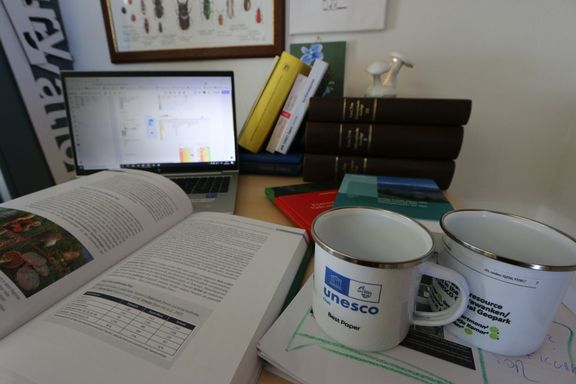
After four successful years since the establishment of the UNESCO Chair, a photo shoot of the team took place in October 2024.
Have a look at the gallery
The third expedition.nationalpark took place in the national park communities of Mörtschach and Winklern.
Have a look at the gallery
Exploring the lynx trail in Tarvisio (Italy) as part of the LIFE project, which aims to protect the population of the Dinaric Alpine lynx from extinction.
Have a look at the gallery
The second expedition.nationalpark took place in the national park community of Heiligenblut.
Have a look at the gallery
On 13 and 14 July 2023, we celebrated the successful completion of the 1st turn of the Master's program Management of Conservation Areas.
Have a look at the gallery
This is what our everyday work in the UNESCO Chair Team looks like :)
Have a look at the gallery.
Exploring the new temporary exhibition on biodiversity monitoring techniques in the State museum of Carinthia.
Have a look at the gallery.
The transdisciplinary research format expedition.nationalpark.2022 took place for the first time in the national park community of Mallnitz.
Have a look at the gallery
The Christmas excursion of the UNESCO Chair team in 2022 took us to the Taborhöhe, a viewpoint near Lake Faak.
Have a look at the gallery.
hristian Brandstätter (www.christianbrandstaetter.com) made the panorama pictures for the book expedition.nationalpark.2022, which was presented at the Mallnitz Visitor Center on 29 April 2023.
Have a look at the gallery.
Exploring the underground world of the UNESCO Global Geopark Karawanken. Exciting impressions from the depths of the mountain during a guided kayak tour!
Have a look at the gallery.
After two successful years since the establishment of the UNESCO Chair, a photo shoot of the team took place in September 2022.
Have a look at the gallery.
In the third semester, the following protected areas were the destination of our excursions in the attendance block in November 2022: UNESCO World Heritage Site Venice and its Lagoon, Nature Park Pöllauer Tal and Nature Park Dobratsch.
Christian Brandstätter (www.christianbrandstaetter.com) made the panorama pictures for the book expedition.nationalpark.2022, which was presented at the Mallnitz Visitor Center on 29 April 2023.
Have a look at the gallery.
Homebase for a successful team. Our new office creates motivation to implement new ideas to protect nature!
Have a look at the gallery.
Looking inside the toolkit of nature conservation engineers (February 2022). We proudly present our graduates of the certificate course “Nature Conservation Engineer”.
Have a look at the gallery.
In the second semester, the following protected areas were the destination of our excursions in the attendance block in March 2022: Donauauen National Park, UNESCO Biosphere Reserve Wienerwald, Triglav National Park, UNESCO Biosphere Reserve Julian Alps.
Have a look at the gallery.
The UNESCO Chair team went on a Christmas excursion to the Dobratsch Nature Park. After some refreshments with a breath-taking sunset, the rapid descent with the toboggan followed!
In September 2021, the first turn of the MCA Master's programme started. The first term offered students the opportunity to get to know the Villach campus for theoretical knowledge transfer, as well as to explore the surrounding conservation areas such as the UNESCO Biosphere Reserve Nockberge, National Park Hohe Tauern or Nature Park Dobratsch during their excursions. Have a look at the gallery.
After a successful year since the appointment of the UNESCO Chair, the team has grown considerably!
In May 2021, a photo shoot took place around the Villach Campus.
Nature conservation engineers out and about (Spring 2021).
Insights into excursion topics such as birds, amphibians or nature conservation technologies.
Looking inside the toolkit of nature conservation engineers (October 2020). Participants of the educational programme present their final seminar work, reaching from protection of biodiversity up to adaptation strategies of forests to climate change.
Making of a short image clip in August 2020 with students from CUAS for the Master "Management of Conservation Areas", in the UNESCO Biosphere Reserve Nockberge.
Skill-oriented education for nature conservation in the 21st century (May 2020). Significant steps of the relaunch of the international Master "Management of Conservation Areas", such as "Little Sidney" in Donauauen National Park, the work of the Austrian Experiences Pool and the official presentation of the master in the Dobratsch Nature Park on September 18th, 2018.
Nature conservation engineers out and about (May 2020). A kaleidoscope of pictures from field excursions, university sessions and workshops.
Looking inside the toolkit of nature conservation engineers (May 2020). Participants of the educational programme present their final seminar work, reaching from conservation monitoring, experiments for vegetation control to ibex tracking and bat nesting facilities.
Certificate Course 'Nature Conservation Engineer' - Success Stories
Outstanding universal values (May 2020). The travelling ecologist and photographer Michael "Mike" Huber documents UNESCO world heritage sites around the globe.
UNESCO sites around the world (c) Michael Huber
Encounters in exciting environments (May 2020). Selected hightlights from the European Parks Academy (EPA) in Carinthia from 2016 to 2019, indicating that this summer university really is a format to learn, exchange and enjoy.
Magic moments in Carinthian conservation areas (May 2020). Selected parks and protected sites in the Chair´s surrounding, seen through the lenses of the Carinthian photographer Christopher Rossmann in spring 2020.
Carinthian Sites (c) Christopher Rossmann
Conservationists shall never eat alone. The UNESCO Chair on Sustainable Management of Conservation Areas at the Carinthia University of Applied Sciences invites partners and friends to lunch. We meet virtually every Wednesday at lunchtime (12.30 CET) with our brown bags. Different representatives of grassroot initiatives, international organizations, and the scholarly world as well give a short impulse on nature conservation in the 21st century and contribute to our lunchtime discussion. The statements are recorded and made available for download far beyond lunchtime. If you would like to take part virtually in a brownbag session, please contact Monika Auinger via e-mail m.auinger[at]fh-kaernten[dot]at
How can we categorize the extinction risk of species, Peter?
23.10.2024 | Zulka Klaus Peter | Senior expert at Environment Agency Austria
Protected Area Labels for agri-food products: A real solution for biodiversity, or just another fancy sticker, Athina?
16.10.2024 | Athina Koutsouki | PhD candidate at Aristotle University of Thessaloniki
How can the barcoding community respond to global conservation needs?
09.10.2024 | Adriana Radulovici | Executive Secretary of the International Barcode of Life
Can conservation research findings really become the next billion-Dollar Startup – with a little help from the Gründergarage, Petra?
02.10.2024 | Petra Hössl | Senior Researcher in the Industrial Engineering program at CUAS
How did one tree conquer a whole continent, Anna?
25.09.2024 | Anna Kovarovics | Expert on conservation areas at E.C.O. Institute of Ecology
Whinchat are you still singing in the Alpes vaudoises, Jean-Christophe?
10.07.2024 | Jean Christophe Fallet | secrétaire exécutif at Alpes vivantes
How can we optimise the overtourism in national parks?
03.07.2024 | Mateusz Rogowski | Chair of Tourism and Recreation at Adam Mickiewicz University, Poznan, Poland
When should environmental restoration start in Ukraine?
26.06.2024 | Bohdan Vykhor | executive director at WWF Ukraine
Can stink bug control work with robots and drones, Manfred?
19.06.2024 | Hartbauer, Manfred | Professor at the University of Graz
How Can Free Conservation Tools Help Turn the Tide for Endangered Species, Adam?
12.06.2024 | Adam Turner | Wildlife Ranger And Conservation Biologist
30x30 can we learn from the past or are we doomed to repeat the same mistakes, Olivier?
05.06.2024 | Olivier Hymas | Senior Researcher at University of Lausanne, Coordinator of the IUCN-WCPA OECM Europe Working group
Wolfgang, what are the facts about the European Restoration Law?
29.05.2024 | Wolfgang Suske | expert for nature protection and executive director of Suske consulting
20 Years of Carpathian Convention. What are the strong and what are the weak points, Harald?
22.05.2024 | Harald Egerer | Head of UNEP Vienna Programme Office - Secretariat of the Carpathian Convention
How can we design a transdisciplinary exploration of a national park, Monika?
15.05.2024 | Monika Auinger | Junior Researcher at the UNESCO Chair on sustainable management of conservation areas
How can we trace the unintended dispersal of neophytes in protected areas using eDNA, Vid?
08.05.2024 | Vid Švara | Senior Researcher at the UNESCO Chair on sustainable management of conservation areas
How to strengthen transnational cooperation on Alpine biodiversity issues, Claire?
24.04.2024 | Claire de Kermadec | project officer at the permanent secretariat of the Alpine Convention
What is the current legal basis for ensuring safety on visitor trails in Austria's national parks and what criteria can be used for hazard tree management adapted to the requirements of the protected area, Karoline and Ernst?
17.04.2024 | Karoline Zsak, Ernst Karner | employee in the Donau-Auen National Park, professor for Civil Law at University of Vienna
How can we categorize the extinction risk of species, Peter?
Zulka Klaus Peter | Senior expert at Environment Agency Austria
Protected Area Labels for agri-food products: A real solution for biodiversity, or just another fancy sticker, Athina?
Athina Koutsouki | PhD candidate at Aristotle University of Thessaloniki
How can the barcoding community respond to global conservation needs?
Adriana Radulovici | Executive Secretary of the International Barcode of Life
As part of the BioMONITec project, the Management of Protected Areas research group at Carinthia University of Applied Sciences focuses on testing the latest technologies and tools in biodiversity monitoring, evaluating their applicability and comparing them with traditional methods.
The BioMONITec Configurator offers a collection of interactive online tools that are intended to assist conservationists.
Becoming proficient at identifying species requires observational skills and extensive field experience. In projects like BioMONITec, we explore how technology can assist experts to develop their capacities.
Unmanned Aerial Systems, also known as “UAS” or simply “drones” provide exciting opportunities for very flexible and fast “on-demand” monitoring of the environment.
Utilizing advanced 3D modeling techniques, we can comprehensively capture habitat features including horizontal and vertical habitat structures, terrain characteristics, biotic features, habitat complexity, and environmental disturbances.
Whether it's magnetometers for cyclists, video cameras for accurate visual counting, infrared counters for hikers, or other technology on the market, understanding and choosing the right technology for monitoring is crucial.
Environmental DNA (eDNA) can be found in the environment and extracted from a variety of media such as water, soil, or wood. Collecting eDNA from the environment and performing eDNA analysis enables determination of different organisms living in these media.
The challenge in dealing with the SDGs
Federal Minister Leonore Gewessler - Austrian Federal Minister for Climate Action, Environment, Energy, Mobility, Innovation and Technology
Andrej Sovinc - Slovenian engineer, hydrologist & ecologist (IUCN/WCPA)
Every summer, students can gain practical experience in research at a talent internship of the Austrian Research Promotion Agency (FFG). Final video of our interns from 2022.
Every summer, students can gain practical experience in research at a talent internship of the Austrian Research Promotion Agency (FFG). Final video of our interns from 2023.
In summer 2024, three interns, funded by the Austrian Research Promotion Agency (FFG), were able to gain an insight into research. Final video of our interns from 2024.
Research & Education: A visit to the outdoor laboratory in Metschach
Vanessa Berger and Ilja Svetnik give a practical insight into their daily work with biodiversity technologies.

The designations employed and the presentation of material throughout this publication do not imply the expression of any opinion whatsoever on the part of UNESCO concerning the legal status of any country, territory, city or area or of its authorities, or concerning the delimitation of its frontiers or boundaries. The ideas and opinions expressed in this publication are those of the authors; they are not necessarily those of UNESCO and do not commit the Organization.